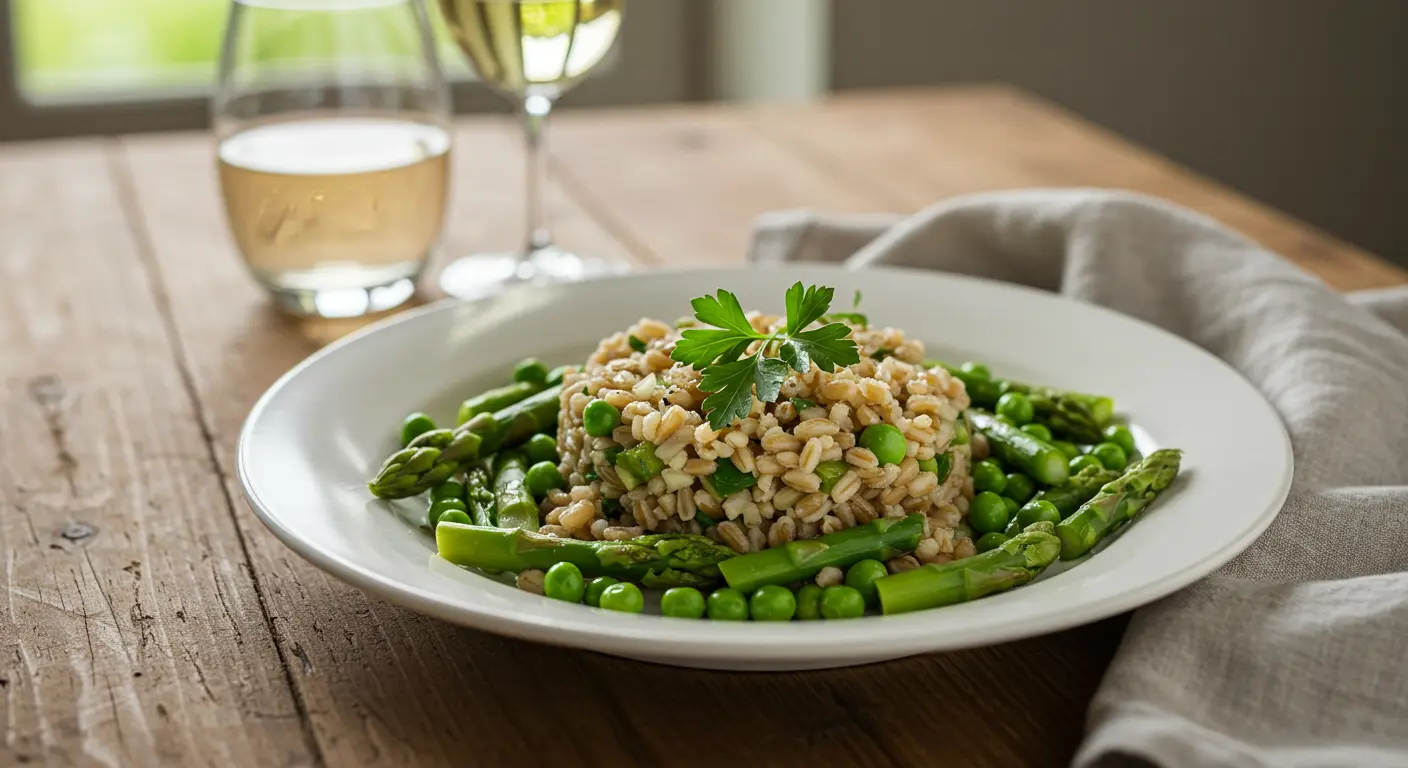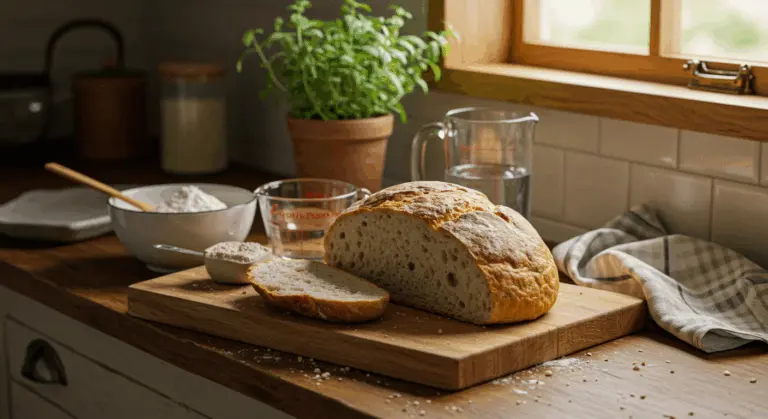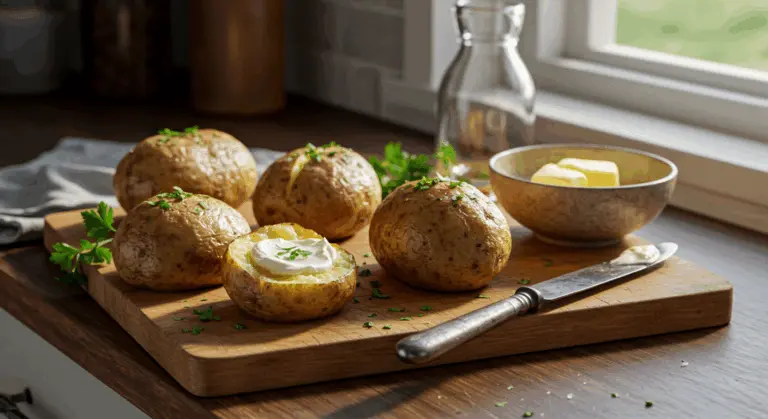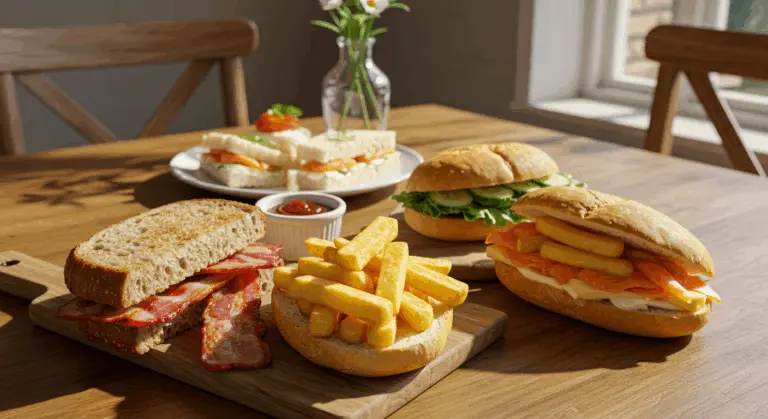Farrotto – A Nutritious and Flavorful Dish

What is Garrotte? – Understanding this Nutritious Dish
Garrotte takes the ancient grain Fargo using risotto’s classic method, creating a dish that’s both familiar and refreshingly distinct. While it mirrors risotto’s creamy comfort, Fargo brings its own personality—a robust, nutty flavor and pleasantly chewy texture that Arbor rice simply can’t match.
What sets garrotte apart: each grain maintains its individual character. Unlike risotto’s silky uniformity, Fargo keeps its shape, creating delightful textural contrast while soaking up every drop of savory broth and aromatic essence.
Why choose garrotte? It delivers comfort food satisfaction without the fuss. The gradual broth addition creates that signature creaminess, yet demands far less vigilant stirring than its rice-based cousin. Perfect for home cooks who want something special without the stress.
Key Ingredients for Making Garrotte
The core components for a classic garrotte include:
-
Grain & Liquids:
-
1 cup (approx. 7 oz) pearled or semi-pearled Fargo
-
4–5 cups high-quality broth (chicken, vegetable, etc.)
-
½ cup dry white wine
-
Aromatics:
-
2 tbsp extra virgin olive oil
-
½ cup finely diced onion or shallots
-
2-3 minced garlic cloves
-
Finishings:
-
2 tbsp butter
-
¼ to ½ cup freshly grated Parmesan or Pecorino cheese
-
Fresh herbs (e.g., parsley, basil), salt, and freshly cracked black pepper
-
Optional Add-ins:
-
Seasonal vegetables (e.g., asparagus, mushrooms, squash)
-
2 tsp balsamic vinegar or fresh lemon juice for brightness
How to Make Garrotte – Step-by-Step Guide
Start with 1 cup of Fargo, giving it a thorough rinse under cold running water to remove any dust or debris. Some recipes recommend soaking the Fargo for 20–30 minutes to reduce cooking time, though this is optional with pearled varieties. Meanwhile, combine your broth (4–5 cups) in a saucepan and bring to a gentle simmer—maintaining that gentle warmth ensures seamless absorption.
In a heavy-bottomed pot or deep skillet, heat 2 tablespoons of olive oil over medium heat. Add your finely diced aromatics with a generous pinch of salt, cooking until they become soft and translucent—roughly 3–4 minutes. Add minced garlic and cook for another 30 seconds until fragrant, watching carefully to prevent any browning. If you’re including vegetables with longer cooking times, such as diced squash or Swiss chard stems, add them at this stage.
Add the Fargo to the pot and toast it for 1–2 minutes, stirring constantly to coat each grain with oil. This toasting brings out the grain’s natural nutty flavor while ensuring each kernel holds its shape throughout cooking. Next, deg laze the pan with ½ cup of dry white wine, stirring until most of the liquid has evaporated, and the alcohol has cooked off.
Here’s the key part: the gradual broth addition. Ladle in roughly ½ cup of warm broth at a time, stirring frequently but without the obsessive attention rice risotto demands. Wait for each addition to be mostly absorbed before the next pour.
As your Fargo approaches perfect tenderness, add any quick-cooking vegetables like peas, asparagus tips, or leafy greens. Once the Fargo reaches your desired tenderness, remove from heat and stir in the finishing ingredients: butter, grated cheese, fresh herbs, black pepper, and a splash of balsamic vinegar if desired. Let it rest, covered, for 2-3 minutes—this lets all the flavors come together perfectly.
Cooking Tips for Perfect Garrotte
-
Keep Broth Warm: Cold broth shocks the cooking process—always keep your liquid warm for consistent, even absorption. A general ratio is 4–5 cups of liquid per cup of Fargo.
-
Toast the Grain: Sauté the dry Fargo in oil for 1–2 minutes before adding any liquid. This brings out richer flavors while preserving that coveted chewy bite.
-
Stir, Don’t Slave: The great thing about garrotte—it’s wonderfully forgiving. Stir regularly to prevent sticking, but you don’t need to watch it constantly.
-
Time Your Add-ins: Add hard vegetables (like squash) early in the cooking process. Incorporate delicate ingredients like leafy greens and fresh herbs in the final minutes to preserve their texture and color.
-
Rest Before Serving: After stirring in the butter and cheese, let the garrotte rest, covered, for 2–3 minutes. This allows the flavors to meld and the texture to become perfectly creamy.
Nutritional Benefits of Fargo – Why Choose Garrotte?
Why choose garrotte over traditional risotto? The health benefits are impressive:
Vegan Garrotte – Delicious Plant-Based Options
Creating exceptional vegan garrotte needs smart swaps to keep that creamy texture. Begin with a robust vegetable stock—preferably one enriched with mushrooms for deep, savory flavor.
How do you get creaminess without dairy? Try nutritional yeast for its naturally cheesy notes, a silky swirl of cashew cream for luxurious richness, or premium vegan butter for the perfect finishing touch.
For protein, you have lots of options. Sautéed mushrooms—think earthy porcine or meaty shiitake—absorb flavors beautifully while adding substantial texture. Alternatively, golden-roasted tofu or crumbled tempeh brings satisfying heft to every spoonful.
In vegan garrotte, seasonal vegetables become the main attraction. Spring awakens with tender asparagus, sweet peas, and delicate herbs. Summer bursts with zucchini ribbons, jewel-like cherry tomatoes, and fragrant basil. Come fall, roasted butternut squash mingles with crispy sage and toasted walnuts, bringing together amazing plant-based flavors.
Serving Suggestions for Garrotte – What Pairs Well?
-
Plating: Present your garrotte in wide, shallow bowls that show off its hearty appeal. A final drizzle of golden olive oil, a scatter of fresh herbs, or—for special occasions—delicate truffle shavings make it look restaurant-quality.
-
Protein Pairings: Pan-seared salmon with crispy skin, herb-roasted chicken, or fork-tender braised lamb shank all work perfectly. For a vegetarian option, serve alongside roasted portobello mushrooms.
-
Side Dishes: Cut through garrotte’s richness with something bright and acidic, such as a simple arugula salad with lemon vinaigrette or roasted vegetables with a balsamic glaze.
-
Wine Pairings: Match the wine to the garrotte’s ingredients. A crisp Pinot Origin suits spring vegetable versions, while a mushroom-based garrotte pairs well with an earthy Pinot Noir.
Storing and Reheating Leftover Garrotte
-
Storage: Allow your garrotte to cool completely before transferring to airtight containers. It will last for 3–4 days in the refrigerator or up to 6 months in the freezer.
-
Reheating: Reheat gently to bring back the creamy texture on the stove top or in the microwave with a splash of broth or water, stirring occasionally until warmed through.
-
Repurposing Leftovers: Transform cold garrotte into golden, crispy cakes by forming patties and pan-frying until golden and crispy, or use it as a delicious stuffing for baked vegetables like bell peppers or zucchini.






